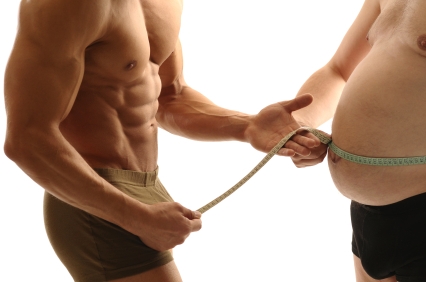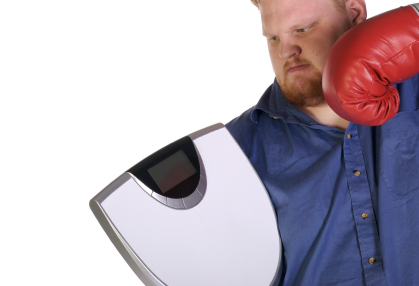Find Your Six Pack Body!

I’d like to start off this post by very briefly summarizing the basic anatomy of the abdomen, with the hope of painting a more complete picture of the challenges faced by all who valiantly attempt to battle the bulge.
The human abdomen is actually made up of three different muscles, each of which is responsible for several functions in the body.
1. The deepest muscle, called the transversus abdominis, runs from the inside of each hip bone to just below the last bone of the ribcage. The function of the transversus abdominis is to act as the primary and most essential stabilizer of the spine. According to Nicholas Institute of Sports Medicine and Athletic Trauma (NISMAT), this muscle has often been found to be in a weakened state in cases where people have complained of chronic lower back pain.
 2. The second muscle, called the external obliques, is found just on top of the transversus abdominismuscles. The external obliques run vertical on each side of the body from the edges of the rectus abdominis and the hips to the area of the underarms right below the arm pit. Their primary responsibilities include supporting the abdomen, rotating the ribs and pelvis in opposite directions from one another, and enabling the movement of pulling the chest downwards and compressing the abdominal cavity.
2. The second muscle, called the external obliques, is found just on top of the transversus abdominismuscles. The external obliques run vertical on each side of the body from the edges of the rectus abdominis and the hips to the area of the underarms right below the arm pit. Their primary responsibilities include supporting the abdomen, rotating the ribs and pelvis in opposite directions from one another, and enabling the movement of pulling the chest downwards and compressing the abdominal cavity.
3. The third and final muscle, called the rectus abdominis, is the muscle people are generally referring to when they are looking to get a set of six-pack abs. This muscle actually consists of two parallel muscles running right down the center of the abdomen from about the fifth rib toward the groin area. Three fibrous bands typically cross the muscle, which is what ultimately causes the familiar and desperately desired shape of the six-pack. The primary functions of the rectus are to act as a stabilizer, and as a postural muscle. Therectus abdominis also has a vital role in assisting with breathing, coughing, childbirth, and defecation. That’s right, your six-pack helps you shit! Though the six-pack is by far the most common configuration of the muscle, anatomic variations which result in the appearance of eight (the “eight-pack”), and ten are not uncommon. There also exists an even rarer formation of the muscle in which the two sides of the muscle aren’t matched one for one, so it’s possible to have a seven-pack (Hey, who drank one of my beers?!).
The following three factors are your keys to unlocking the door to your six-pack body. The good news is that most people can achieve some version of a six-pack. The bad news is that the lengths to which you must be prepared to go depends heavily on the first of three factors.
1. Genetics
We’ve all known people growing up who appeared to have a set of perfect six-pack abs from birth. Despite our knee-jerk reaction to hate and loath them, some of them may have even been our friends. I swear I have a friend who must have been doing sit-ups in his crib as an infant, because he’s ALWAYS had a perfect set of abs. He and I were even in a band together when we were younger, and guess who never could quite manage to find a shirt. That’s right Mr. my fat must be stored in my attic.
The bottom line is that genetics dictated that my friend’s abdomen was not one of the primary places that his body stored fat. He was no more responsible for his washboard stomach than I was for the little beer belly that seemed to have hung around since I began nursing. Neither of my parents ever drank, so I’m certain there was no beer in my bottle until much later in life. Whether you’ve been gifted with a naturally perfect abdomen or not can be simply attributed to the genes that your parents lovingly bestowed on you. Yes, this is one of those fabulous times that you actually get to blame your parents for something. It’s the genetics that they passed on to you that dictates how much, where, and in what order your body fat is stored. Those of us who did not receive the gift of abdominal perfection, and those who had it in our youth only to lose it through age, are forced to fight for the right to roll with the abdominally elite. The good news is that although genetics does play a major role in determining your body’s composition, your commitment to the next two factors are keys to playing the cards you’ve been dealt in the best way you can. Can everyone develop a perfectly formed “six-pack”? According to my research it appears that “expert” opinions are all over the board. But if you’re actively working out and pursuing the dream at 15% body fat, I’d say it’s pretty obvious that you certainly have a much better chance of success than if you’re still sitting dormant on the couch at 35% body fat wondering!
2. Physical Activity – Big, Strong Abs Show Through
a. If you want develop your stomach into a six-pack, or even if you’d just like your stomach to be a little flatter, it’s imperative that your do strength training to build your abdominal muscles just as you would with any other muscle. “Just as you would with any other muscle” is the key. I see people all the time doing 8-12 rep, 3-4 sets for all other muscle groups, and then they head over to the mat and crank out 100 crunches. The simple truth is that if you want to be able to see your abdominal muscles, you’re going to have to make them bigger. This is accomplished by increasing the amount of weight you’re lifting with them, just like you would with any other muscle. I’ve found that I see and feel the most benefit by doing 8-12 rep sets, but the realkey for results is to perform every abdominal exercise in a slow and controlled movement. I shoot for a pace of 4 seconds up, and 4 seconds down. Maintaining this slow and deliberate pace will allow you to get the same burn you’d get from higher rep exercises in less time. It increases your efficiency by eliminating your natural tendency to swing through the motions, and forces you to work the muscle throughout the entire movement. Another addition that REALLY helps me to feel the burn is to hold a plank pose between abdominal workout sets for as long as I can.
b. A second simple fitness truth is that the strongest abdominal muscles in the world are not going to be seen if they’re veiled behind a thick layer of excess body fat. Having excess body fat in your abdomen can also put you at a greater risk for developing heart disease, diabetes, and cancer. That’s why a central goal of most fitness journeys should include a goal to achieve a reduction in body fat, especially around the abdomen. You see so many people trying to get lean solely through hour long treadmill, or elliptical marathons, but the truth of the matter is that you burn essentially the same amount of calories with intense strength training. A further benefit of strength training is that it causes your body to continue to burn calories for about an hour after you’ve stopped lifting, as your body attempts to rebuild the muscles you’ve worked. This benefit is increased even more if you lift heavy weights, or if you limit your recovery time between sets to only 30 seconds. With cardio your body’s really only burning calories as long as you’re performing the exercise. Keep in mind that while performing extended cardio sessions you’re burning lean tissue as well as fat, so it can be actually reducing your lean muscle. Remember that a pound of additional lean muscle will burn roughly an extra 50 calories per day. For more on this please see my post titled“Kill Your Bathroom Scale Before it Kills You”. Don’t get me wrong, cardio is a great way to improve your cardiovascular health and is tremendously beneficial to your overall health. The truth remains however that abs are muscles, and if you want to see them you’re going to have to build them.
3. Diet – You Are What You Eat
Even with all the physical activity in the world the simple truth is that if you’re truly committed to getting the lean, chiseled abdomen, it’s essential that you’re attentive to your diet. Even if you think you have a pretty good idea of what you’re eating day in and day out, I urge you to keep a journal of EVERYTHING you eat for a week or two. I was required to track everything I ate for a summer fitness class, and the results simply blew me away. I was astonished to learn that I wasn’t eating nearly the daily recommended amounts of fresh fruits and vegetables that my body required. I also learned that I tend to do a great deal of snacking on a day-to-day basis, and it wasn’t nutrient rich food as you might expect. Sounds like the typical American diet, huh? The problem is that our demand for convenience in a fast paced world has enabled us to ingest mass quantities of absolutely nutrient devoid food without even consciously thinking about what we’re putting into our bodies. If you want to look and feel like everyone else around you, then keep following the herd.
If you are looking to sport a sic-pack, it is vitally important that you regulate your dieting habits in tandem with your strength training. A diet that is full of nutrient rich fruits and vegetables, packed with lean protein, and very rarely includes fatty sweets is crucial to achieving your success as efficiently as possible. The 2 keys to your six-pack body that you have control of will allow you to reduce your body fat percentage, while simultaneously building lean muscle mass. Despite what you see in the infomercials for the latest fat busting ab gadget, there is no way to spot-reduce body fat. I assure you that if there was a way no person in the world would have the belt-line issues that continue to plague the majority of our population. The only way to lose body fat around your waist is to reduce the amount of fat in your body as a whole. My personal goal is to reduce my body fat percentage to within the “Athletes” to “Fitness” ranges. For further details on these ranges be sure to view my past post titled “Kill Your Bathroom Scale Before it Kills You”.
I salute all of you in your undertaking and wish you the best of luck in your quest.
Hello Fitness Freaks,
Be sure to share your favorite ab workouts in the comments section below to be entered into a drawing for free fitness knowledge (books). The winner will receive copy of “Born to Run: A Hidden Tribe, Superathletes, and the Greatest Race the World Has Never Seen”, By Christopher McDougall. I’m not even much of a runner, but I really enjoyed this book.
If you like what you see so far then please subscribe above.
Stay the course my friends and Happy Workout Wednesday!!!
-Lean Muscle Matt






Hi Matt, not a bad article mate. Some plain honest truths that people try to skip around and cheat, but there’s no avoiding some things!
I’ve been fairly lucky that a genetically blessed area for me is the low body fat side of things, but as far as building muscle… not so much, haha.
As far as exercise, I favour bracing abdominal exercise very heavily. Roll-outs on an Ab Wheel are pretty much the only “ab specific” drill that I regularly do. Those are, as you mentioned, relatively high resistance and often done in short sets at good intensity and reasonable density for time.
Otherwise all my “ab work” would be tied up in bracing on deadlifts, squats and Kettlebell drills (swings, snatches etc).
I also believe that doing reasonable hip hinge and back work can help with postural issues that may be making your abdominal area not look as attractive as it should!
Thank you Piers.
It boggles my mind to see how many people are constantly throwing their money away on the new “quick fix”. It’s like they’re relying on the lottery for their fitness dreams, instead of simply employing basic principles to their everyday lives that have been proven to build a wealth of health. It’s like our society has become addicted to immediate gratification. Have we’ve forgotten that anything truly worth having is worth working for?
I am consistently changing up my training routines, both because I tend to get bored as hell if I don’t, and because I really value the principle of muscle confusion. I love-to-hate dead-lifts as well, and I’m also a HUGE fan of training with Kettlebells. Kettlebells are a fabulous way to target multiple muscle groups while using only a few movements, not to mention I find the routines addictively challenging! Thanks again for sharing.
Cheers!
Matthew